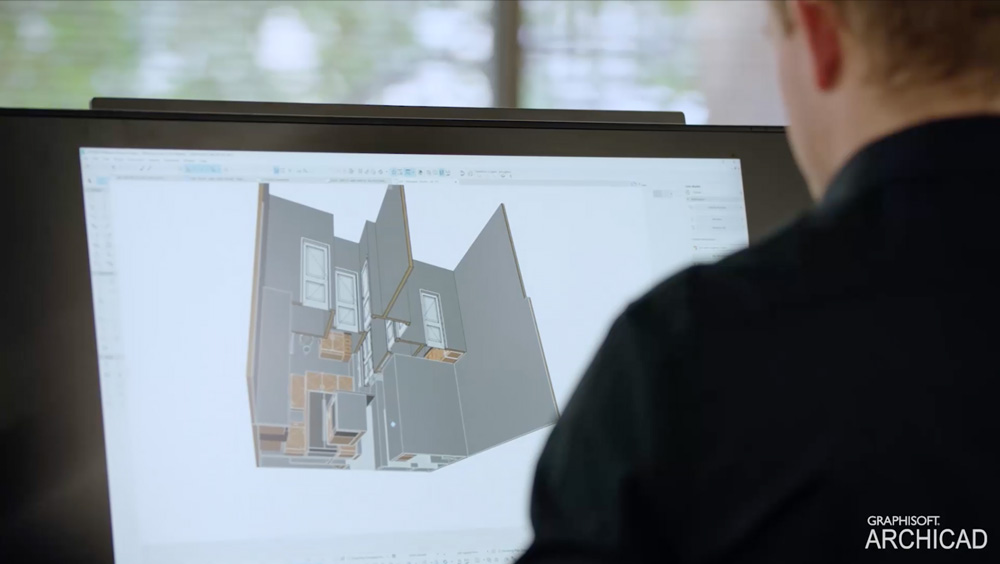August 30, 2021

Ask Arch Willingham about titles – or any other topic – and you’ll get a refreshingly honest answer that’s often followed by an invitation to grab a beer.
If you ask Arch Willingham about titles – or how one should refer to him – he rejects just about every one of them.
By way of introduction, picture yourself in a college lecture hall or classroom. It is your first day of class with Adjunct Professor Arch Willingham. He opens with a question:
“Hey, what do you call the teacher that taught you in the class before mine? Doctor?” I said, “I’m not that. Professor? I’m not that. Mister? I’m not that. It’s either Arch if you’re building a building or Archie if you’re going to have a beer with me.”
In the end, we agreed I would refer to him as a teacher – respecting the role he has with construction management college seniors. His goal is to make learning something that is “boring as hell” such as BIM, fun to learn and fun to teach.
For one so averse to titles, Willingham has accumulated a few – more than one at the president level. He serves as President of TU Parks Construction, a general contractor company in Chattanooga, Tennessee and is past President of Associated General Contractors (AGC) of East TN, and Vice Mayor of Lookout Mountain GA. Perhaps having multiple roles at that level made him an ideal person to help start the construction management program at the University of Tennessee in Chattanooga (UTC).
Building a Construction Program that Gives Back
Prior to the program’s inception, AGC of East TN felt the need to be able to offer scholarships to local students in a construction management program but were stymied by the backlog at the construction management/building science programs at the major schools (Auburn, Clemson, etc). To that end, AGC of East TN approached the state of Tennessee about starting a construction management program at UTC and, after lots of finagling, one was created.
With authorization from the state of Tennessee, the program got its start with a $200,000 donation from AGC. Graphisoft joined the program’s patrons with a significant investment in free licenses of Archicad for use by the students and teachers – what would later become standard issue in all versions of Archicad.
And so, a BIM class, “Building Information Modeling” was born. Willingham did not write the course description, but he sums up how he approaches BIM in his inimitable fashion:
BIM, in and of itself, is a long laborious, phenomenally boring process. Students are not big on classes that are boring as hell.
Arch Willingham
Boring as hell, BIM or not, Willingham has known Archicad for a good portion of his professional career. The initial introduction stemmed from Willingham needing to provide conceptual schematics to help with pricing on residential and commercial projects in the early design phase for his clients. Archicad delivered on this need.
“Before my time, we made many agreements on buildings based on a handshake and nothing more than a sketch on a bar napkin. I needed something to push that envelope; something that would allow me to take some preliminary parameters from a customer, then turn that into something that a customer, and my subs, could understand.”

“After I spent time testing out software that didn’t really work – I happened upon Archicad which was perfect. I could draw my concepts in “plan view” and everything I did was reflected in elevation, as well as 3D……I was sold!”
He took that basic implementation of Archicad and turned it into a BIM theory class, using Archicad as the curriculum backbone. Students start the learning process by drawing a wall, then a square, then add additional components until they can create a two-story structure. Along the way to completion, they then add increasingly complex pieces from Archicad to generate the final model. In the end, the goal is not for students to create full-scale drawings. Rather, their teacher wants them to get their model to a point where it can be used to illustrate a question, highlight potential problems with a design or make suggestions about a more buildable detail of the building. Architects appreciate receiving these details as part of an RFI (request for information) as it makes the problem easier to grasp and by doing this, it helps the student become a more respected member of the design team.
Making BIM ‘Fun’ to Learn
At this point in our discussion, I wanted to know how Willingham makes BIM fun to learn – since we know he thinks it is boring as hell. This teacher says he relies on getting his students drawing and doing it in 3D for a more instant gratification.
“When my students start seeing elements that they are drawing pop-up in 3D, there’s a sense of a satisfaction. Some students really enjoy modeling, creating a realistic public scene with people in (or on top of) the building, cars on the street or even a pool in a back yard; all of this seems to make them eager to use the software. The old ways of using plain old CAD, AutoCAD®, etc and looking at some lines and drawing a bolt can’t compete with that.”

Graphisoft’s early involvement with the Construction Management Curriculum at UTC seems to have caught on. According to their teacher, Willingham says that by the end of the semester, they are hooked as they have learned how Archicad can empower their use of BIM in ways most construction management team members can use to affect the project.
“At the end of the day you want to establish collaboration between the builder and the architect – and hopefully – the owner. Archicad greases the wheels to help do that. Professionally – Archicad helps users avoid the worst thing which is attempting to construct a design that can’t be built in the field.”
Archicad helps users avoid the worst thing which is attempting to construct a design that can’t be built in the field.
Arch Willingham
If Willingham has a key goal as a teacher of construction management students, it is to make sure that they understand how BIM is used in real world construction today. Building Information Modeling, as it applies to construction management – from Graphisoft’s perspective – would ideally involve all stakeholders working from a single shared model so that everybody has all the data, all the information that they need, and they can access the parts that pertain to their job. Unfortunately, he says the adoption rate of BIM – to that level – is almost zero in his region. “Unless you are getting into jobs that are probably more than $15 to $20 million, at this point there’s just not enough people in our region that have the skill level to do it, especially when it comes to the subs. When I teach my students Building Information Modeling – it means you are modeling the important, functional parts of the building and not the entire building. That version of BIM has more of an adoption rate, serves the purpose better and offers a much better return on investment.”
“As an example, one sheet calls for a W8X50 beam in a wall and another sheet calls for a window in the same location. If it’s not caught until the carpenter is trying to install the window, somebody is going to lose and get stuck with the cost; not only the direct costs but also through the cost of delays caused by the inconsistent drawings. As part of the construction management team, catching these things by looking at them in BIM software – especially with being able to spin them around in a model – helps significantly with the evaluation. By doing so, we can help make sure the project moves forward successfully. Again, do you have to put the whole building in for it to be considered BIM and useful? My answer is an unequivocal no.”
Preventing Project Issues in the Real World
This teacher works hard to make sure his students keep things from going wrong when their turn comes to work in the real world. He sees projects go wrong more often than you might guess and has amassed enough experience to be routinely called to testify as an expert witness in construction cases as well as serve as a consultant in the lead up to litigation. This expert witness work, backed by his knowledge of construction, is made much easier and more effective by the ability to clearly demonstrate issues with the use of Archicad.
“I use Archicad extensively in testimony. I also share those case stories with my classes. In the courtroom and classroom, I take people through the model in Archicad and primarily use the 3D features of the software. It helps because, though these are real-world examples, you must see them to believe it happened. In one project in particular, the contractor completely screwed up an owner’s project by removing a load bearing wall with no provisions to ensure the structure did not fail. The fact that the building did not collapse was truly a miracle. Using the software, I was not only able to clearly show how taking out that wall compromised the safety of the building but also used it to show how it might be reconstructed.”
While Arch Willingham may not want the title of professor, or president, or expert witness, or even teacher – he has all those, and had this advice for his students and fellow peers.
A contractor or an architect can spend a week coming up with a roof framing plan manually or, with 10 clicks of a mouse, Archicad will do it for you.
Arch Willingham
“A little Archicad knowledge can make all the difference. A super easy example is the roof tool. Figuring out slopes, how valleys are going to match, how roofs will tie together can be a bear. A contractor or an architect can spend a week coming up with a roof framing plan manually or, with 10 clicks of a mouse, Archicad will do it for you. By quickly sharing this information, this process can help build relationships with architects and owners. Having these basic BIM skills and knowledge of the subject is crucial to being a productive member of the construction team. Now let’s go have that beer.”
Find out more about the Construction Management Program at the University of Tennessee in Chattanooga (UTC) here.
